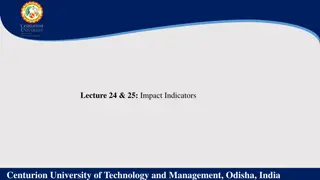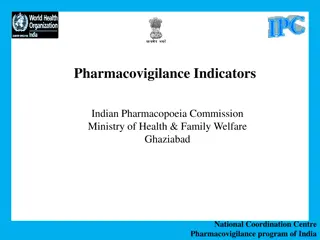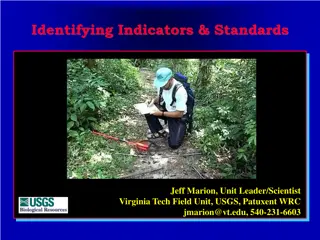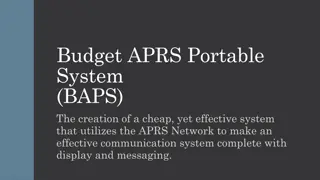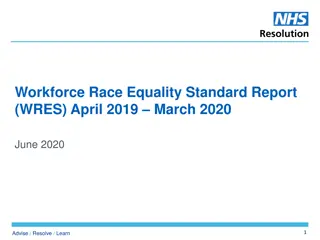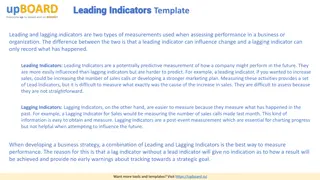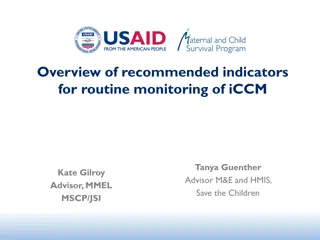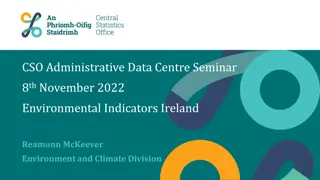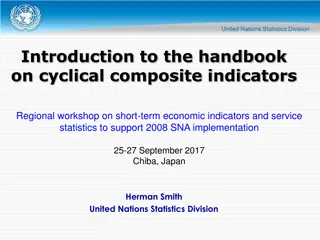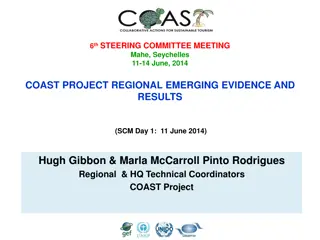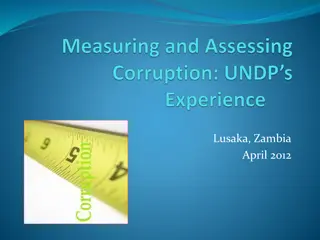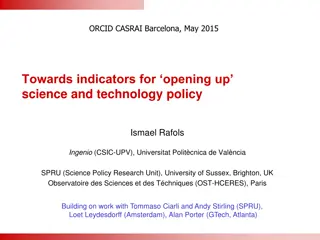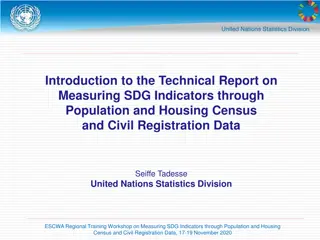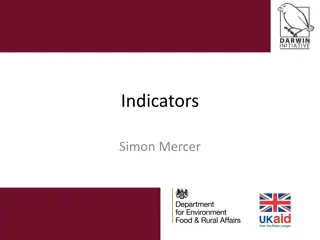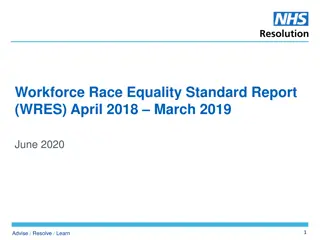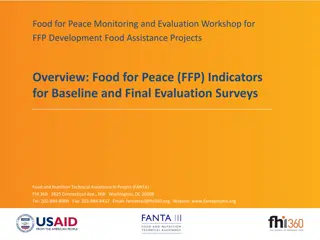Progress on BAPS Indicators and Methodologies Report
The report presents the progress on BAPS Outcome and Output indicators for 2016, evaluating achievements against set milestones. Key areas include integrating statistics in decision-making, promoting open access to statistics, increasing resources for statistical systems, and measuring NSDS quality and statistical literacy. The report highlights achievements, deviations from milestones, and areas for improvement in enhancing statistical development to support the SDGs.
Download Presentation

Please find below an Image/Link to download the presentation.
The content on the website is provided AS IS for your information and personal use only. It may not be sold, licensed, or shared on other websites without obtaining consent from the author.If you encounter any issues during the download, it is possible that the publisher has removed the file from their server.
You are allowed to download the files provided on this website for personal or commercial use, subject to the condition that they are used lawfully. All files are the property of their respective owners.
The content on the website is provided AS IS for your information and personal use only. It may not be sold, licensed, or shared on other websites without obtaining consent from the author.
E N D
Presentation Transcript
Methodologies for BAPS Indicators Kenneth Bambrick Chair, BAPS Task Team Revisiting Capacity Development to Deliver on the SDGs Annual Meetings 2017 5-6 April
Progress on BAPS Outcome indicators Indicator Indicator Measured Value (2016) Milestone: Achieved or Not? Deviation from Milestone (2016)* Indicator Milestone Value (2016) 0a: Fully integrate statistics in decision making (average score on the use of statistics in policy making process) 73.2 Achieved +1% 72.5 0b: Promote open access to statistics (number of target countries signed up to Open Government Partnership) 52 Achieved +49% 35 0c: Increase resources for statistical systems (global estimated commitments to statistical development in target countries over rolling, three year period) 1.57 Billion USD Not achieved -5% 1.65 Billion USD * In the graphs, red lines indicate milestones (targets) and blue lines give the measured values.
Progress on BAPS Output indicators Indicator Indicator Measured Value (2016) Milestone: Achieved or Not? Deviation from Milestone (2016)* Indicator Milestone Value (2016) 1a: Share of countries whose government has adopted an NSDS which is currently being implemented 51% Not achieved -15% 60% 2a: Number of online survey catalogues published by ADP countries or others, using the IHSN cataloguing tool 88 Achieved +10% 80 2b: Number of countries that have an Open Data Readiness Assessment (ODRA) with World Bank support 30 Achieved +20% 25 3a: Share of MDG indicator series for which the majority of data are "country data" NA NA NA NA 5a: Share of annual aid to statistics (as reported in the PRESS) relative to total ODA 0.25% Not achieved -4% 0.26% * In the graphs, red lines indicate milestones (targets) and blue lines give the measured values.
Progress on BAPS Output indicators Indicator Indicator Measured Value (2016) Milestone: Achieved or Not? Deviation from Milestone (2016)* Indicator Milestone Value (2016) 5b: Share of aid to statistics (as reported in the PRESS) that is aligned with NSDS 78% Not achieved -8 % 85% 5c: Annual commitments (in millions) to statistical development 470 Million USD NA NA NA 1b: Develop a methodology to measure NSDS quality NA 15 NA NA 3b: Develop measure of knowledge and skills (statistical literacy) countries. NA 17.24 NA NA for target 4a: references and/or data gaps at global summits. Develop a measure statistical of explicit NA 1.21% NA NA to development * In the graphs, red lines indicate milestones (targets) and blue lines give the measured values.
Coverage of CT-GAP Areas by Busan Indicators CT-GAP Strategic Area 4. Dissemination and Use No. of Objectives 7 Covered by Busan Indicators (%) 100 1. Leadership 6 50 3. Statistical Activities 28 39 2. Modernization of NSS 12 33 5. Partnerships 3 33 6. Resources and Coordination 10 30
3 new BAPS indicators The PARIS21 Secretariat developed and piloted 3 new indicators 1. References to statistical development and/or data gaps in global summits. 2. Knowledge and skills (Statistical literacy). 3. Evaluation of the quality of National Strategies for the Development of Statistics.
1. References to statistics in summits Purpose: Monitoring the outcomes of global summits and high level forums Data source: An analysis was undertaken based on 38 100 unique tweets containing a total of 65 919 hashtags. Indicator result 2016: 1.21% of all the hashtags used by all the UN agencies are related to statistical development. In comparison: only 0.25% of ODA went to statistics in 2014. -> Increase in statistics support to be expected if aid flows follows aid talk .
2. Statistical Literacy Purpose: Monitoring of knowledge and skill sets needed to use statistics effectively Assumption: Journalists' references to and critical engagement with statistics are an image of a nation s statistical literacy. Indicator result 2016: 17.24 is the average score of half of 77 IDA borrowing countries. In comparison: The national level indicators are positively correlated with national TIMSS score.
3. NSDS Quality Purpose: Monitoring and evaluating the performance of NSDS. Methodology: A monitoring framework on 1. Information and Status of the NSO 2. Resources and Expenditure 3. Demand Responsive 4. Dissemination and Use 5. Data Quality 6. Results and Performance Implementation: 15 countries have piloted the evaluation tool (to date)



